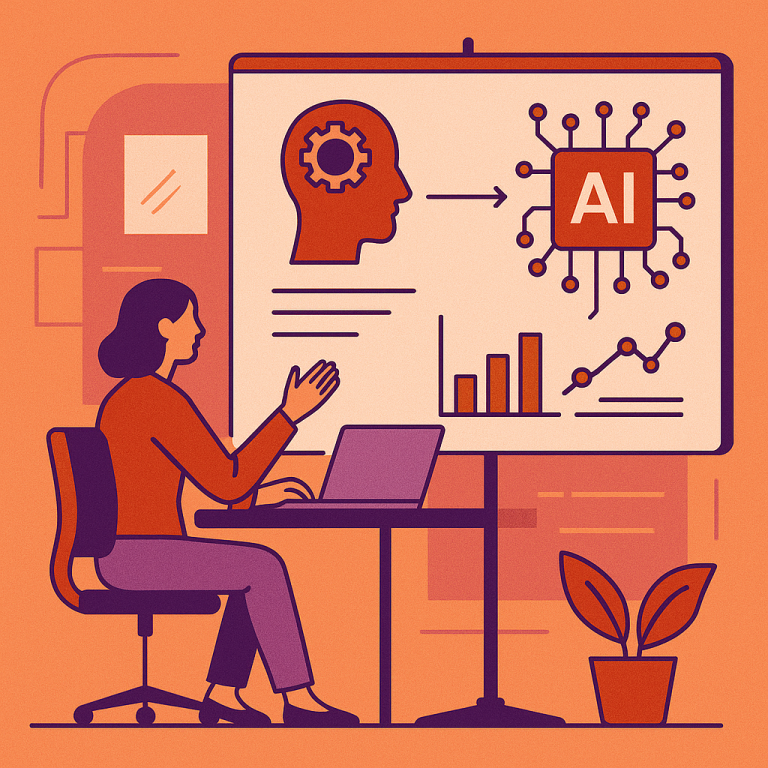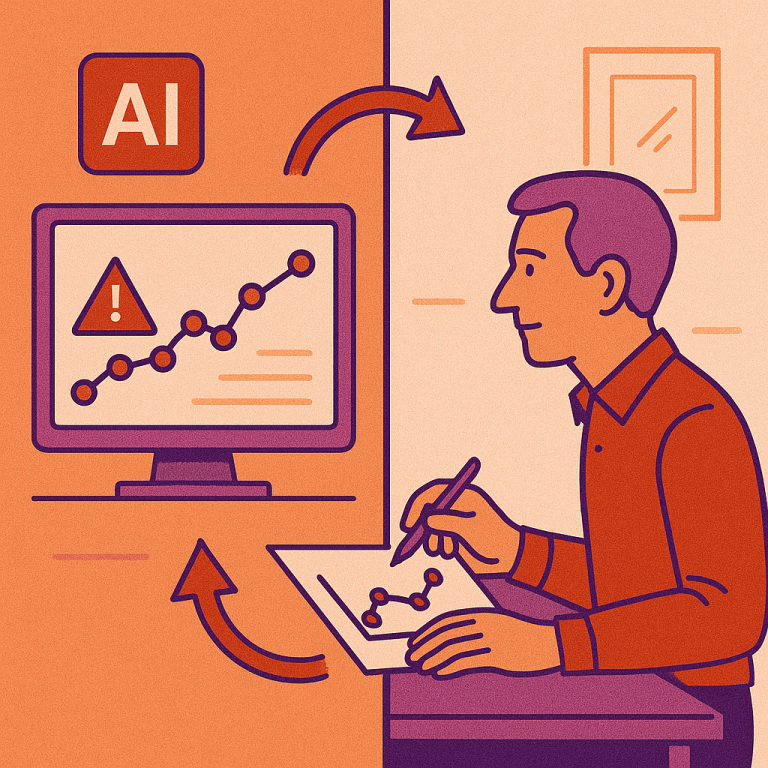Achieving Optimal Results with Human-in-the-Loop Workflows
In the rapidly evolving landscape of artificial intelligence, one methodology stands out for its ability to harness the best of both human intelligence and machine learning capabilities: human-in-the-loop workflows. As organizations strive to implement AI solutions that deliver reliable, ethical, and effective results, finding the perfect balance between automation and human expertise has become crucial. This comprehensive guide will explore how to implement these hybrid systems to maximize their benefits while avoiding common pitfalls.

Understanding Human-in-the-Loop Workflows
Human-in-the-loop (HITL) workflows represent a hybrid approach where algorithmic systems and human intelligence work in tandem, leveraging the strengths of both to achieve superior outcomes. Unlike fully automated systems that operate independently, HITL workflows strategically incorporate human judgment at critical decision points.
Definition and Core Components
At its core, a human-in-the-loop system is an AI workflow that keeps humans involved in the decision-making process. These systems typically consist of three fundamental components:
- Machine Learning Algorithms – The computational engines that process data, identify patterns, and make initial predictions or classifications
- Human Interfaces – The tools and dashboards that present information to human operators and collect their input
- Feedback Mechanisms – Systems that incorporate human decisions back into the AI to improve future performance
What distinguishes HITL from fully automated systems is the deliberate integration of human judgment. While automated systems might excel at processing vast amounts of data rapidly, they often struggle with nuanced decisions, novel situations, or ethical considerations—areas where human intelligence still holds a significant advantage.
The roles humans play in HITL workflows are diverse and evolving. They may serve as trainers who provide labeled examples, validators who verify machine outputs, explainers who interpret results to stakeholders, or sustainers who continuously monitor and improve system performance.
Historical Development and Evolution
Human oversight in computing systems is not new. Early computational systems relied heavily on human operators for both input and interpretation. As technology advanced, the relationship between humans and machines evolved from direct operation to partnership.
The modern concept of human-in-the-loop emerged as machine learning systems became more sophisticated. Early ML applications required extensive human labeling of training data, creating a natural human-machine collaboration. As systems advanced, this relationship evolved from simple labeling to more complex forms of supervision.
Today, human-in-the-loop workflows have become increasingly sophisticated, with specialized tools and platforms designed to facilitate effective human-machine collaboration across various domains. The methodology has matured to recognize that the goal isn’t to replace human judgment but to augment it—and vice versa.
Benefits of Incorporating Human Expertise in AI Workflows
Organizations implementing HITL workflows report numerous advantages over purely automated approaches, particularly in scenarios requiring high accuracy, ethical considerations, or handling of edge cases.
Enhanced Accuracy and Quality Control
Human oversight dramatically improves output quality in AI systems, particularly for complex tasks. Research consistently shows hybrid approaches outperforming either humans or machines working in isolation.
| Task Type | AI-Only Accuracy | Human-Only Accuracy | HITL Accuracy |
|---|---|---|---|
| Medical Image Analysis | 83% | 87% | 96% |
| Content Moderation | 78% | 91% | 94% |
| Sentiment Analysis | 85% | 79% | 92% |
Companies like Zillow have realized these benefits in practice. When implementing AI for home valuations, their initial fully automated approach led to costly errors. By reintroducing human expertise into the workflow, they achieved both scale and accuracy, reducing valuation errors by over 30%.
Ethical Considerations and Bias Reduction
Perhaps one of the most compelling reasons to maintain humans in AI workflows is to address ethical concerns and reduce bias. Humans serve as essential ethical guardians in these systems:
- Detecting and correcting algorithmic bias before it impacts decisions
- Applying contextual understanding to potentially sensitive scenarios
- Ensuring transparency in how decisions are made
- Building stakeholder trust through visible human oversight
Organizations implementing HITL approaches report substantially higher levels of trust from both customers and regulators, with ethical AI decision oversight becoming increasingly important in regulated industries.
Adaptability to Edge Cases
No training dataset can encompass every possible scenario an AI might encounter. Human-in-the-loop workflows excel at handling these “edge cases”—unusual situations that occur infrequently but can significantly impact performance.
When an AI encounters a situation outside its trained parameters, human operators can:
- Resolve the immediate case with appropriate judgment
- Document the scenario for future training
- Help develop guidelines for similar cases
- Identify patterns in edge cases that might indicate emerging trends
This adaptive capability creates a continuous improvement cycle that makes the system more robust over time, gradually expanding the range of situations it can handle effectively.

Implementation Strategies for Effective HITL Workflows
Successfully implementing human-in-the-loop workflows requires thoughtful design and execution. Here are key strategies for developing effective systems.
Determining When Human Intervention Is Needed
Not every AI decision requires human review. Effective HITL systems strategically route only certain cases to human operators based on carefully designed criteria:
- Confidence Thresholds – Routing cases where AI confidence falls below predetermined levels
- Risk Assessment – Prioritizing high-stakes decisions for human review
- Novelty Detection – Identifying cases that differ significantly from training examples
- Random Sampling – Reviewing a percentage of cases for quality assurance
Financial services companies often implement tiered intervention models where transaction amounts, recipient profiles, and algorithmic confidence interact to determine whether a transaction requires human review.
Workflow Design Best Practices
The interface between humans and AI systems critically influences workflow effectiveness. Well-designed HITL systems incorporate these best practices:
- Creating intuitive interfaces that present relevant information clearly
- Implementing efficient task routing to match cases with appropriate expertise
- Reducing cognitive load through thoughtful information presentation
- Providing decision support tools that assist human judgment
- Ensuring seamless integration with existing systems and workflows
Automated customer satisfaction systems using HITL workflows, for example, might present service agents with AI-generated satisfaction predictions alongside contextual information about the customer’s history, allowing for informed intervention before problems escalate.
Training and Managing Human Contributors
The human component of HITL workflows requires as much attention as the technological aspects. Organizations should focus on:
- Skill Development – Training contributors in both domain expertise and AI interaction skills
- Clear Guidelines – Providing consistent decision frameworks to reduce variability
- Quality Assurance – Implementing processes to verify contributor performance
- Motivation and Engagement – Designing roles that remain engaging and meaningful
Companies with successful HITL implementations often create specialized teams with deep domain expertise combined with AI literacy, rather than treating human review as an entry-level function.
Real-World Applications of Human-in-the-Loop Workflows
HITL methodologies have been successfully deployed across numerous industries, each with unique requirements and applications.
Content Moderation and Classification
Social media platforms face the enormous challenge of monitoring billions of content pieces daily. Human-in-the-loop workflows have proven essential here:
- AI systems provide initial screening of potentially problematic content
- Human moderators review flagged content with contextual understanding
- Decisions feed back into training data to improve future automated detection
- Specialized interfaces allow moderators to quickly assess and categorize content
This approach has allowed platforms to scale moderation efforts while maintaining nuanced judgment on context-sensitive issues like hate speech, misinformation, and harmful content.
Medical Diagnosis and Healthcare
In healthcare, HITL workflows are transforming diagnosis while maintaining crucial medical oversight:
- AI systems analyze medical images to highlight potential abnormalities
- Radiologists review AI-flagged areas, applying clinical judgment
- Diagnostic confidence scores determine prioritization for human review
- Feedback from confirmed cases improves future AI performance
Studies show these collaborative approaches can reduce missed diagnoses by up to 85% while simultaneously improving radiologist productivity.
Financial Services and Fraud Detection
Financial institutions have pioneered sophisticated HITL approaches for fraud detection:
- Transaction monitoring systems flag unusual activity patterns
- Human analysts review complex cases with customer context in mind
- Manual reviews inform model updating to detect emerging fraud patterns
- Tiered review processes allocate human attention based on risk levels
This balanced approach allows institutions to process millions of transactions while maintaining vigilance against sophisticated fraud schemes that pure automation might miss.
Measuring Success and Optimizing Human-in-the-Loop Systems
Evaluating HITL workflow performance requires metrics that capture both machine and human aspects of the system.
Key Performance Indicators
Effective measurement frameworks typically include:
| Metric Category | Example Metrics | What It Measures |
|---|---|---|
| Accuracy | Precision, Recall, F1 Score | Overall system performance in making correct decisions |
| Efficiency | Cases per hour, Time per decision | Productivity of the combined human-machine system |
| Automation Rate | % of cases handled without human review | System’s ability to handle routine cases independently |
| Human Agreement | Inter-annotator agreement, Override rates | Consistency of human decision-making |
| Business Impact | Cost per decision, Time to value | Economic effectiveness of the workflow |
This balanced scorecard approach ensures that improvements in one area (like automation rates) don’t come at the expense of others (like accuracy).
Continuous Learning and Workflow Refinement
HITL systems should be designed for ongoing improvement through:
- Structured Feedback Loops – Capturing human decisions to improve models
- A/B Testing – Comparing different workflow designs for effectiveness
- Gradual Automation – Systematically identifying tasks ready for increased automation
- Periodic Review – Regularly assessing overall system performance against objectives
Organizations with mature HITL implementations often establish dedicated teams responsible for continuous workflow optimization, treating the process as a product that requires ongoing refinement.
Future Trends in Human-Machine Collaboration
As AI capabilities continue to evolve, so too will the nature of human-in-the-loop workflows.
Advanced Human-AI Interfaces
The next generation of HITL systems will feature more sophisticated interfaces:
- Natural language interfaces allowing conversational interaction with AI systems
- Augmented reality tools that overlay AI insights onto real-world contexts
- Adaptive interfaces that adjust to individual working styles and preferences
- Multimodal interaction incorporating voice, gesture, and traditional inputs
These advances will make human-AI collaboration more fluid and intuitive, reducing the learning curve for effective system use.
Evolving Role of Humans as AI Advances
As AI capabilities grow, the role of humans in HITL workflows will evolve:
- Shifting from routine labeling to strategic oversight and exception handling
- Focusing on ethical guidance and complex judgment scenarios
- Developing new skills combining domain expertise with AI literacy
- Creating new professional roles centered on human-AI collaboration
This evolution represents not replacement but transformation—redefining how human expertise adds value in increasingly sophisticated systems. Human-in-the-loop workflows will continue to provide the framework for this productive partnership.
Conclusion
Human-in-the-loop workflows represent a pragmatic middle path between complete automation and traditional manual processes. By thoughtfully combining the computational power and scalability of AI with the judgment, creativity, and ethical sensibility of human experts, organizations can achieve outcomes superior to what either could accomplish alone.
The key to success lies not in choosing between human intelligence and artificial intelligence, but in designing systems that leverage the unique strengths of both. As AI continues to advance, this collaborative approach will remain essential for applications where accuracy, ethics, and adaptability matter most.
By implementing the strategies outlined in this guide, organizations can develop HITL workflows that deliver optimal results today while evolving with technological advances tomorrow.
